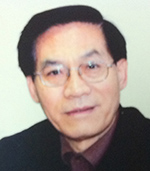In October 2011, an article titled “America’s Pacific Century” by Hillary Rodham Clinton, then U.S. Secretary of State, marked the start of the U.S.’ “return to Asia Pacific” strategy. The Chinese people took this as a natural strategic adjustment by the United States since the Asia-Pacific region has become a global economic and political center. The consequences of this U.S. strategy in the past two years however, have made more Chinese realize that this U.S. strategy may jeopardize both their national and personal interests, and they are showing more dissatisfaction with the U.S. move.
Three factors could explain why the Chinese feel that way. First, the aggressive military deployments by the U.S. are mainly targeted at China. The United States staged many military drills with Japan, the Philippines and Australia, bringing unease to the peaceful West Pacific. The United States also increased its exportation of weapons to the region, delivering advanced warplanes and warships to these countries. Other countries in the region, for their national security, had to increase military spending, consequently unleashing an arms race. What people want to see the least is the region that they inhabit, becoming a hot spot of a tense situation.
Second, the United States uses Japanese Shinzo Abe and Philipino Benigno S. Aquino III as its agents in the “return to Asia Pacific” strategy. Abe has been making use of the Diaoyu Islands and historical issues to challenge China. When China and Japan normalized diplomatic relations in 1972, leaders of the two countries agreed to shelve the issue of the Diaoyu Islands, but Abe has been trying to bring this “sleeping volcano” back to life. He also denied the invasion crimes committed by Japanese militarists and tried to overthrow the verdicts of the International Military Tribunal for the Far East.
Abe’s intent is to instigate China and cause tension so as to pave the way for the revision of the Japanese pacifist constitution, to reinforce Japan’s military power, to relive the glory of the Japanese empire, and to interrupt, for the third time in history, China’s development process. The first interruption was the Sino-Japanese war in 1894, resulting in China being forced to cede territory and pay indemnities to Japan. The second interruption was the invasion of China in the 1930’s and 1940’s. During the war, an immeasurable amount of Chinese wealth perished and 35 million Chinese lost their lives. Today, the Japanese right-wing forces headed by Abe, who are jealous of China’s fast development, are resorting to whatever means possible to contain China’s development. People in China know well that Abe has become arrogant because of his relationship with the U.S., and the “return to Asia Pacific” strategy offers Abe an opportunity.
The U.S. backing of Philippine President Benigno Aquino also made the Chinese unhappy. Aquino is a fence sitter. When he needs China, he is very friendly. When he chose to visit his “ancestral home” in China, he said that his country was willing to “jointly develop” the South China Sea. After the United States announced the “return to Asia Pacific” strategy, however, he considered this as an opportunity and immediately instigated territorial disputes with China and demonized China. It seems that he is willing to be a puppet for U.S. involvement in the South China Sea issue and is likely to take risky actions.
Third, the U.S. tries to use the Trans-Pacific Partnership (TPP) to destabilize the economic pattern in the Asia-Pacific region for its own interests. People in China see the TPP as an economic means for the U.S. to return to its Asia Pacific strategy and for replacing the existing effective economic cooperation frameworks in the region, such as the 10+1 (ASEAN plus China) and the 10+3 (ASEAN plus China, Japan and South Korea). It is unknown yet whether this U.S. intention will succeed, but it is obviously intended to destabilize the economic pattern in the region and weaken China’s economic influence.
China and the United States are constructing a new type of big-power relationship, and the Asia-Pacific region could be a test ground for this big-power relation concept. The U.S. should give priority to expand the fields for cooperation with China in its “return to Asia Pacific” strategy, instead of using it to contain China. Furthermore, the U.S. should better exert its influence over Japan and the Philippines to prevent them from damaging the construction of big-power relationship between China and the United States.
Ma Shikun is a senior commentator at the People’s Daily.

